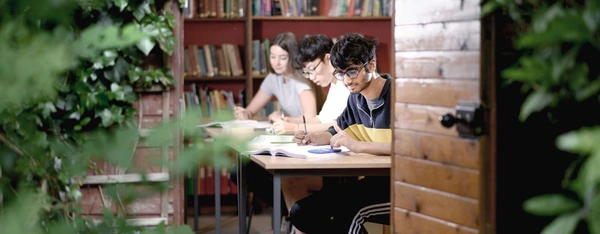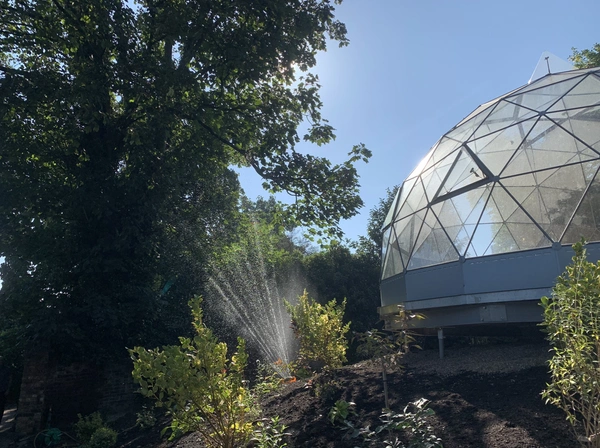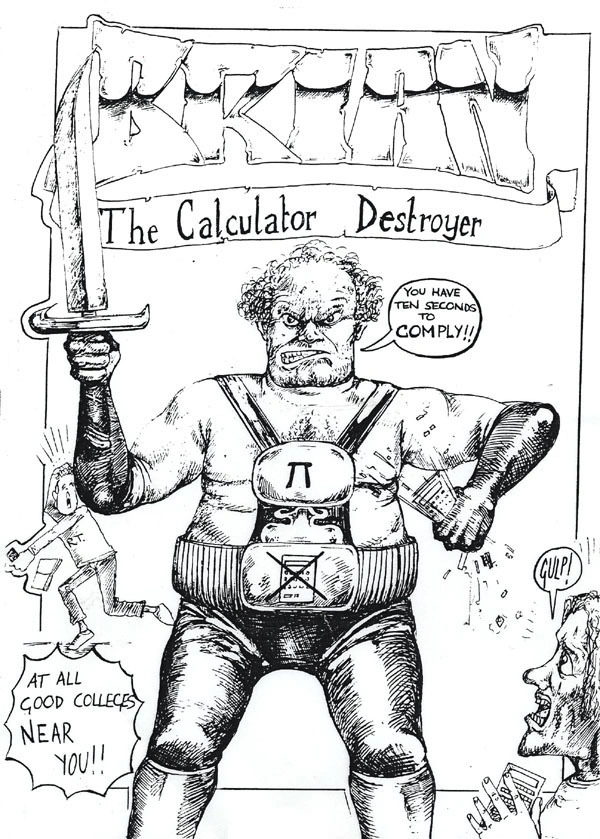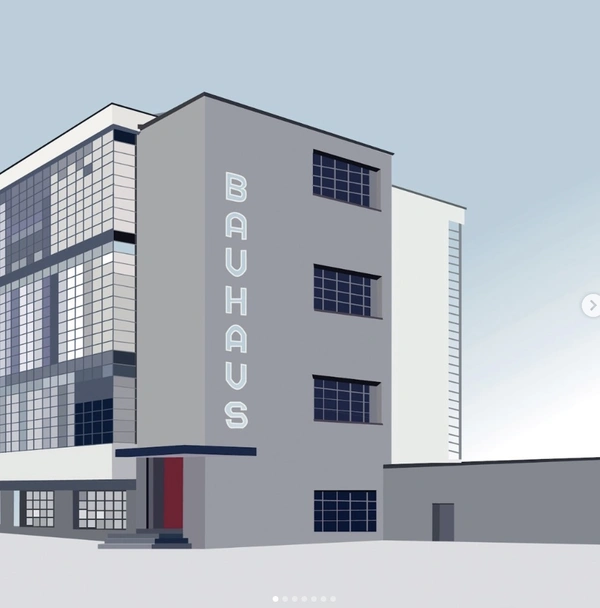Maths & Further Maths
Summing it up
When it comes to getting into universities, especially if you're eyeing STEM fields like science, tech, engineering, banking or finance, or indeed maths itself this is the subject you'll need to master and at RIC it's our biggest subject in terms of GCSE and A level entries each year.
What about the law buffs and humanities aficionados? Maths still plays a crucial role. Maths is keeps chaos at bay and brings order to the world. It's not just about crunching numbers; it's about honing our problem-solving skills, flexing our spatial awareness muscles, and even boosting our creativity. Accordingly Maths is a pre-requisite for Economics at top universities and useful as well for Architecture courses.
At A level, Further Mathematics is useful and sometimes a must for those students aspiring to apply to the most highly ranked universities for subjects as Engineering, Physics or Mathematics. At RIC we also offer tuition in Cambridge STEP papers.

The garden shed at Rochester Independent College looks normal on the outside, but open the door and you discover it is not a shed but a learning environment. There you find teenagers applying the trapezium rule or proving equations. The maths shed is one of several subject hubs that have sprung up in the college's picturesque gardens over the years
Exam Specifications
Assessment Method
100% examination. All the exams are written and externally assessed.
Papers 1 and 5 are sat in May of the first year (year 12). Then papers 3 and 4 are sat in May of the second year (year 13)
Length of exams
Paper 1 - Pure mathematics 1 - 1 hour 50 minutes
Paper 3 - Pure mathematics 3 - 1 hour 50 minutes
Paper 4 - Mechanics - 1 hour and 15 minutes
Paper 5 - Probability and Statistics 1 - 1 hour and 15 minutes
Pure Mathematics 1
Topic 1 - quadratics
Topic 2 - functions
Topic 3 - coordinate geometry Topic 4 - circular measure Topic 5 - trigonometry
Topic 6 - series
Topic 7 - differentiation
Topic 8 - integration
Pure Mathematics 3
Topic 1 - algebra
Topic 2 - logarithmic and exponential functions Topic 3 - trigonometry
Topic 4 - differentiation
Topic 5 - integration
Topic 6 - numerical solution of equations
Topic 7 - vectors
Topic 8 - differential equations
Topic 9 - complex numbers
Mechanics 4
Topic 1 - forces and equilibrium
Topic 2 - kinematics of motion in a straight line Topic 3 - momentum
Topic 4 - Newton’s laws of motion
Topic 5 - energy, work and power
Probability and Statistics 1 Paper 5
Topic 1 - representation of data
Topic 2 - permutations and combinations Topic 3 - probability
Topic 4 - discrete random variables Topic 5 - the normal distribution
Assessment overview
Paper 1 - Pure mathematics 1 is 75 marks. It contains 10 to 12 structured questions based on the Pure Mathematics 1 subject content. It is worth 30% of the A level.
Paper 3 - Pure mathematics 3 is 75 marks. It contains 9 to 11 structured questions based on the Pure Mathematics 3 subject content. It is worth 30% of the A level.
Paper 4 - Mechanics is 50 marks. It contains 6 to 8 structured questions based on the Mechanics subject content. It is worth 20% of the A level.
Paper 5 - Probability and Statistics 1 is 50 marks. It contains 6 to 8 structured questions based on the Probability and Statistics 1 subject content. It is worth 20% of the A level.
Assessment method
100% Exam (Assessed with two equally weighted exam calculator-papers out of 100 marks each) Exam length
There are two exam papers that are two hr in length each.
These are sat in the Summer Term.
Breakdown of units
1. Number. Calculations, rounding, indices, surds, reciprocals and the order of operations. Factors, multiples, primes and standard form.
2. Algebra. Rearranging and solving equations. Forming equations to solve problems. Solving problems with sequences.
3. Interpreting and representing data. Averages and range. Scatter graphs.
4. Fractions, ratio and percentages. Problems with fractions and percentages. Problems with ratio and proportion.
5. Angles and trigonometry. Polygons and angles in parallel lines. Pythagoras’ theorem and trigonometry.
6. Graphs. Basic graphs and real-life graphs. Linear graphs and coordinate geometry. Quadratic, cubic and other graphs.
7. Area and volume. Area and perimeter of circles. Finding the surface area and volume of cylinders, cones and spheres. Accuracy and bounds.
8. Transformations and constructions. Translations, rotations, reflections and enlargements. Constructions, loci and bearings.
9. Equations and inequalities. Solving quadratic equations and completing the square. Solving simple simultaneous equations. Solving linear and quadratic simultaneous equations. Solving inequalities.
10. Probability. Combined and mutually exclusive events. Independent events and tree diagrams. Conditional probability. Venn diagrams and set notations.
11. Multiplicative reasoning. Percentages, growth and decay and compound measures. Ratio
and proportion.
12. Similarity and congruence. Congruence, geometric proof and congruence, similarity in 2D and 3D.
13. More trigonometry. Graphs of trigonometric functions, calculating the area of a triangle. The sine and cosine rule. Solving 3D problems with trigonometry.
14. Further statistics. Cumulative frequency and histograms.
15. Equations and graphs. Solving simultaneous equations graphically, representing inequalities graphically. Graphs of quadratic functions and solving quadratic equations graphically. Graphs of cubic functions.
16. Circle theorems. Radii, chords, tangents and angles in circles. Applying the circle theorems to solve problems.
17. More algebra. Rearranging formulae. Simplifying algebraic fractions and solving algebraic fraction equations. Surds,
functions and proof.
18. Vectors and geometric proof. Vectors and vector notation. Vector arithmetic, parallel vectors. Solving geometric problems using vectors.
19. Proportion and graphs. Exponential functions, non-linear graphs, translating, reflecting and stretching graphs of functions. Direct and inverse proportion.
20. Calculus. Rates of change, differentiating integer powers. Using differentiation to find the gradient, rate of change and minimum and maximum points of graphs. Applying calculus to solve problems with kinematics.
21. Revision.
22. Exam preparation
Assessment Method:
100% examination. All the exams are written and externally assessed.
If you are a two year A level student taking this A level then you will need to complete A level maths in year 12 and then you will complete the A level Further Maths in year 13. This means that you will be sitting the A level Maths papers 1, 3, 4 and 5 in May of your first year (please see A level Mathematics outline for further details). You will then sit the A level Further Maths papers 1, 2, 3 and 4 in May of your second year.
This course is available on a one-year A level programme alongside A level Maths.
Length of exams:
Paper 1 - Further Pure mathematics 1
2 hours
Paper 2 - Further Pure mathematics 2
2 hours
Paper 3 - Further Mechanics
1 hour and 30 minutes
Paper 4 - Further Probability and Statistics
1 hour and 30 minutes
Breakdown of units
Further Pure Mathematics 1 - paper 1
Topic 1 - roots of polynomial equations
Topic 2 - rational functions and graphs
Topic 3 - summation of series
Topic 4 - matrices
Topic 5 - polar coordinates
Topic 6 - vectors
Topic 7 - proof by induction
Further Pure Mathematics 2 - paper 2
Topic 1 - hyperbolic function
Topic 2 - matrices
Topic 3 - differentiation
Topic 4 - integration
Topic 5 - complex numbers
Topic 6 - differential equations
Further Mechanics - paper 3
Topic 1 - motion of a projectile
Topic 2 - equilibrium of a rigid body
Topic 3 - circular motion
Topic 4 - Hooke’s law
Topic 5 - linear motion under a variable force
Topic 6 - momentum
Further Probability and Statistics - paper 4
Topic 1 - continuous random variable
Topic 2 - inference using normal and t-distributions
Topic 3 - x2 tests
Topic 4 - non-parametric tests
Topic 5 - probability generating functions
Assessment overview
Paper 1 - Further Pure mathematics 1 is 75 marks. It contains 6 to 8 structured questions based on the Further Pure Mathematics 1 subject content. It is worth 30% of the A level.
Paper 2 - Further Pure mathematics 2 is 75 marks. It contains 7 to 9 structured questions based on the Further Pure Mathematics 2 subject content. It is worth 30% of the A level.
Paper 3 - Further Mechanics is 50 marks. It contains 5 to 7 structured questions based on the Further Mechanics subject content. It is worth 20% of the A level.
Paper 4 - Further Probability and Statistics is 50 marks. It contains 5 to 7 structured questions based on the Probability and Statistics subject content. It is worth 20% of the A level.
Calculators can be used in all assessments.
Curious about Maths?
Introduction to fun topics
Two RIC Maths teachers gone rogue
https://www.youtube.com/@PhilotiMaths
Linear, Quadratic and Exponential Models (AS level maths)
https://www.youtube.com/watch?v=CxEFOozrMSE
Proof of square root of 2 is irrational (A level Maths)
https://www.youtube.com/watch?v=LmpAntNjPj0
The real world use of complex numbers (AS level Further Maths)
https://www.youtube.com/watch?v=_h49ilnTmW4
Fourier transformation (A level further maths)
https://www.youtube.com/watch?v=spUNpyF58BY
Beyond the syllabus
Students often ask what is to do with the real world all the maths you learnt in school, A-level mathematics is an important step for you to understand why.
Equations that have changed the world (Maths Students)
Mathematics Gets messy, Chocolate!! (Engineering Students)
https://www.youtube.com/watch?v=lSlO-GgLrAY&t=647s
Can maths save the whales? (Maths/Sciences Students)
Read
Music and Mathematics: From Pythagoras to Fractals by John Fauvel
Algorithmic Puzzles by Anany Levitin
Computational Fairy Tales by Jeremy Kubica
A Brief History of Time by Stephen Hawking
Calculating the Cosmos: How Mathematics Unveils the Universe by Ian Stewart
A Prime Obsession by John Derbyshire
Closing The Gap by Vicky Neale
Towards Higher Mathematics: A Companion by Richard Earl
Fermat's last theorem by Simon Singh
Exponential mathematical success
Danny Cheung came to RIC from Hong Kong in 2004 to study English and work as a chef. The College quickly realised that Danny was as adept at algebra as he was at cooking so he attended A level classes while continuing to work in our catering team. Post A levels, RIC awarded Danny a full scholarship to allow him to stay in the UK and study at university. After graduating from City University, London with a first-class degree in Mechanical Engineering Danny then rejoined the College, working in the classrooms rather the kitchens.
Danny says: “I teach at RIC as I remember being taught, sometimes in exactly the same rooms! Maths here is not reading out from power point presentations or following text book chapters in a linear way. Demonstration questions are usually made up on the spot by teachers and we talk through the steps as we write the solutions, asking students to check answers or spot mistakes. This trains them to spot silly errors and how to check their own answers in exam conditions. Maths at RIC challenged me to think rigorously. We have very small classes and students can access individual help easily. With Further Maths particularly, students have to do a lot of exam paper and problem-solving practice.”
While atmospherically relaxed and pretty non-hierarchical as independent schools go, RIC is not an experiment in alternative education. Our curriculum is largely a traditional academic one, testing is regular and systematic and the biggest subject in terms of GCSE and A level entries is Mathematics.
RIC offers successful one year A level Maths courses to students, including those who are over the age of 18 when they start the course.
Purin from Thailand took Maths, Computer Science and Further Maths as one year A level courses, gaining A*A*A* in what was really only nine months of study. He was awarded the CIFE Mathematics Prize and has just completed his first year studying Computer Science at Imperial.
Jiryayus, a Gold Medal winner in the International Mathematics Olympiad, also from Thailand joined RIC in 2019 for a one year A level course before winning a place at Trinity College, Cambridge.
Jiryayus says: “At RIC I was taught by teachers who are excellent in the subject. With the small class size, teachers were able to answer all questions and give constructive feedback to homework. In addition, there was a weekly practice test to make sure that we really understood the lessons and to make us familiar with the exam style.”
When working on a problem, I never think about beauty; I think only of how to solve the problem. But when I have finished, if the solution is not beautiful, I know that it is wrong



1 / 3